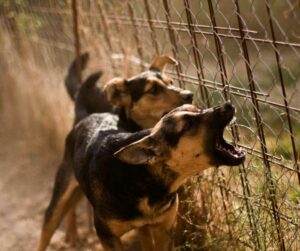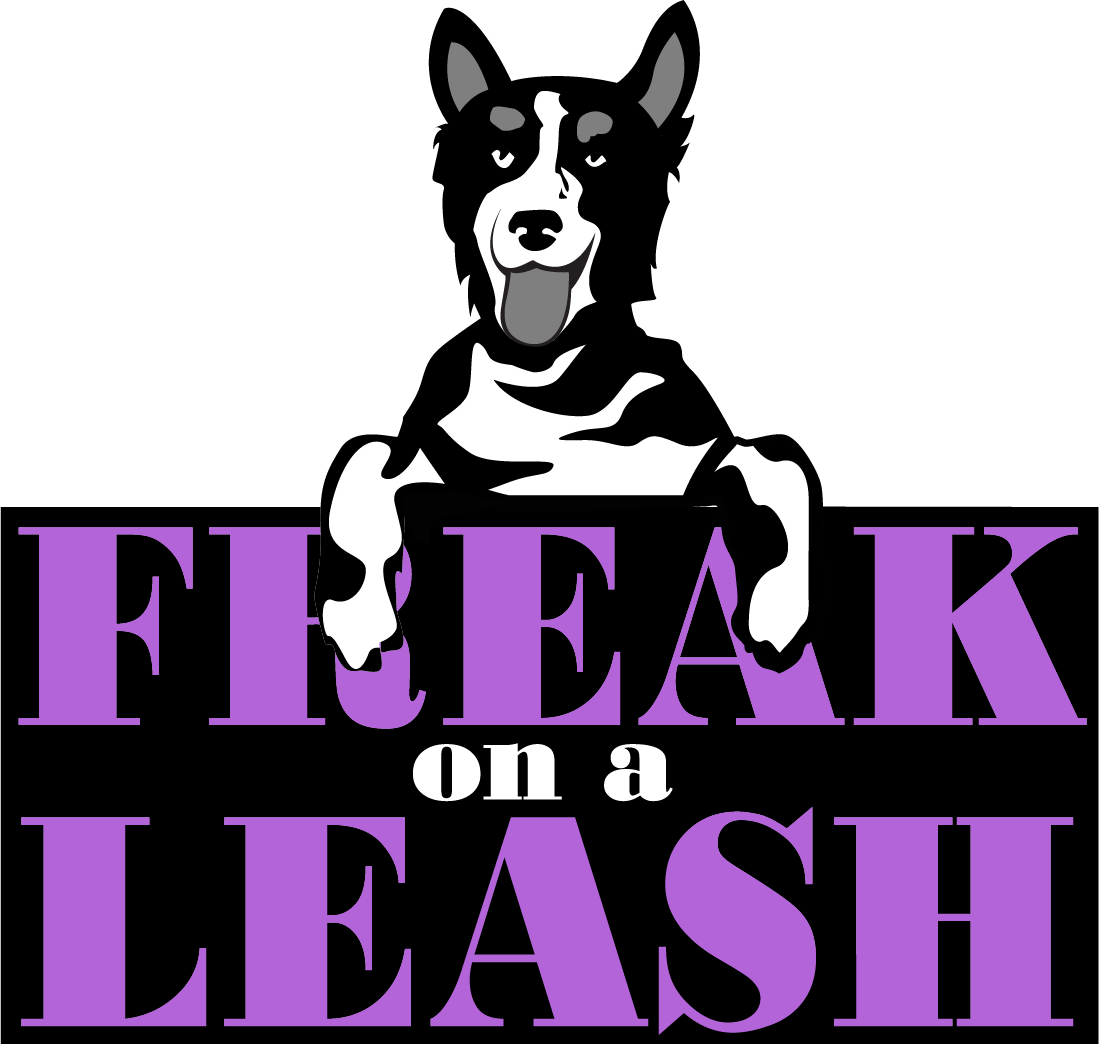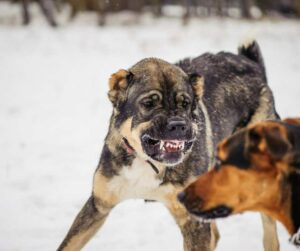Territorial aggression in dogs is a behavior that is often misunderstood. Many people have misconceptions about what territorial aggression is, how it manifests, and how it can be treated. In this blog, we will debunk common myths surrounding territorial aggression in dogs and provide insights into understanding and managing this behavior.
Defining and Understanding Territorial Aggression in Dogs
Territorial aggression is a type of aggression displayed by dogs when they display aggression towards humans, other animals, or both, in an attempt to protect their territory. Dogs exhibiting territorial aggression may bark, growl, or even bite when they perceive a threat to their space. The aggression is directed towards intruders or anyone perceived as a threat to the dog’s territory.
It is important to recognize that territorial aggression is not the same as other types of aggressive behavior, and not all aggressive dogs are territorial. Dogs can also display other types of aggression, such as fear aggression, dog aggression, or resource guarding aggression. Each type of aggression has its own triggers and characteristics, but territorial aggression specifically revolves around protecting and defending a dog’s territory. Understanding the root cause of territorial aggression is crucial for appropriate intervention and training.
Common Myths about Territorial Aggression
There are several common misconceptions surrounding territorial aggression in dogs. It is important to debunk these myths to gain a better understanding of this behavior:
- Myth: Territorial aggression is a breed-specific trait. In reality, territorial aggression can be seen in dogs of any breed or mix of breeds.
- Myth: Only aggressive breeds display territorial behavior. Territorial behavior can be exhibited by any dog, regardless of breed or size.
- Myth: Neutering or spaying can always eliminate territorial aggression. While neutering or spaying can have positive effects on aggression, it may not completely eliminate territorial aggression, as it can be influenced by multiple factors.
- Myth: Territorial aggression is solely influenced by genetics. While genetics can play a role, environmental factors, socialization, and training also significantly contribute to territorial aggression.
- Myth: Punitive training methods are effective in curbing territorial aggression. Positive reinforcement training and behavior modification techniques are more effective in addressing territorial aggression in dogs. Punishment can escalate aggression and worsen the behavior.
Identifying Signs of Territorial Behavior in Dogs
Territorial behavior in dogs can manifest in various ways. By recognizing the signs, dog owners can intervene early and manage their dog’s behavior appropriately. Some common signs of territorial behavior in dogs include:
- Increased reactivity to perceived threats, such as barking, growling, or lunging.
- Unwillingness to retreat from perceived intruders or protect their territory, even when challenged.
- Possessiveness over items or spaces within their territory, such as guarding their food, toys, or sleeping area.
- Heightened arousal in specific contexts, such as intense reactions towards people or animals passing by their territory.
- Persistent marking around their territory, especially near doors, windows, or other boundaries.
Behavioral Changes Indicating Aggression
Territorial aggression in dogs can result in certain behavioral changes that indicate aggression. These changes may include:
- Increased reactivity to perceived threats, such as barking, growling, or lunging towards intruders or unfamiliar individuals.
- Unwillingness to retreat or back down from territorial confrontations, even when challenged.
- Possessiveness over resources, such as food, toys, or personal items, and an increased tendency to guard these possessions.
- Heightened arousal or aggression in challenging situations, such as encounters with unfamiliar dogs or people near their territory.
- Persistent marking of urine, especially near entry points or boundaries of their territory.
It is important to note that not all territorial behavior in dogs is aggressive. Dogs may display territorial behavior without aggressive tendencies, such as alerting to the presence of strangers without displaying aggression.
 Physical Signs and Cues
Physical Signs and Cues
Territorially aggressive dogs often display physical signs and cues that indicate their aggressive behavior. These signs are important to recognize, as they can provide early warning signals of potential aggression. Some common physical signs and cues of territorial aggression include:
- Raised hackles, intense stare, and stiff posture.
- Dilated pupils and tense facial expressions.
- Growling, snarling, or lunging towards intruders.
- Tightly closed mouth, wrinkled forehead, and ears pinned back.
- Rapid tail wagging combined with stiff body language.
It is crucial to pay attention to these physical signs and cues to gauge a dog’s signs of aggressive behavior and respond accordingly. However, it may be important to consult a behavior professional or veterinarian for an accurate assessment of a dog’s behavior.
Causes of Territorial Aggression
The causes of territorial aggression in dogs are complex and can be influenced by various factors, including environmental and genetic aspects. Understanding these causes can provide insight into managing and addressing territorial aggression effectively.
Environmental Factors
Environmental factors play a significant role in the development of territorial aggression in dogs. The way dog owners interact with their dog, socialization experiences, and the overall environment can contribute to territorial behavior. Some common environmental factors that can influence territorial aggression include:
- Limited exposure to different environments, leading to heightened sensitivity to perceived threats.
- High-stress living conditions or frequent disruptions, impacting a dog’s emotional state and amplifying territorial responses.
- Inconsistent boundaries or lack of routine, which can create confusion and insecurity, potentially triggering territorial behavior.
- Insufficient socialization opportunities, depriving dogs of positive experiences with other dogs, people, and new environments, leading to territorial tendencies.
The dog owner’s role in shaping the dog’s environment, providing consistent training, socialization, and positive reinforcement, significantly affects the development and management of territorial aggression.
Genetic and Breeding Factors
Genetic and breeding factors can also contribute to territorial aggression in dogs. Breeds with guarding instincts or predispositions towards territorial behavior can be more prone to displaying territorial aggression. Some key points regarding genetic and breeding factors influencing territorial aggression include:
- Certain dog breeds may have a genetic inclination towards territorial behavior, although it does not guarantee aggression.
- Breeding practices emphasizing aggressive traits can contribute to territorial aggression in certain lines of dogs.
- Inherited traits related to guarding instincts and territorial behavior can increase the likelihood of territorial aggression.
- Genetic factors may interact with environmental influences, such as socialization experiences, to shape a dog’s behavior.
Understanding breed-specific characteristics and traits is crucial when addressing and managing territorial aggression in dogs.
Misconceptions about Treating Territorial Aggression
It is important to debunk misconceptions surrounding the treatment of territorial aggression in dogs. Understanding these common misconceptions can help dog owners approach the behavior appropriately and effectively address territorial aggression.
Myth: Punishment is the Solution
One common misconception is that punishment is an effective way to address territorial aggression in dogs. In reality, punishing a dog for territorial aggression can worsen the behavior and increase anxiety and fear, potentially leading to escalated aggression. Punishment-based training methods can compromise the dog-owner relationship, making it more challenging to address territorial aggression effectively. Instead, addressing the root causes of the aggression, such as fear or insecurity, and implementing positive reinforcement training techniques, is a more appropriate way to manage territorial aggression.
Fact: Positive Reinforcement Helps
In contrast to the misconception of punishment as a solution, positive reinforcement training and behavior modification techniques are effective in reducing territorial aggression in dogs. Positive reinforcement involves rewarding desired behaviors, such as calm and non-aggressive responses, to strengthen positive associations with territorial situations. Obedience training, including basic obedience commands, can help establish clear communication and boundaries, reinforcing appropriate behavior in challenging situations. It may be necessary to consult with a professional dog trainer or behavior consultant who specializes in positive reinforcement techniques to develop a safe and effective plan to address territorial aggression.
Strategies to Curb Territorial Aggression
Implementing effective strategies is crucial in curbing territorial aggression in dogs. Combining obedience training, behavior modification, and other proactive measures can help manage and reduce territorial aggression.
Importance of Obedience Training
Obedience training plays a significant role in managing territorial aggression in dogs. Teaching dogs basic obedience commands, such as sit, stay, and come, helps to establish control and boundaries, reducing the likelihood of aggressive behavior. Additionally, early socialization is crucial, as it exposes dogs to various environments, people, and animals, promoting positive social behavior and minimizing territorial tendencies. Consistent obedience training, positive reinforcement, and early socialization provide the foundation for shaping appropriate behavior, reducing territorial aggression, and fostering a strong bond between dog and owner.
Encouraging Calm Behaviors
Encouraging calm behaviors in territorial situations can help manage territorial aggression in dogs. Positive reinforcement techniques, such as rewarding calm behavior in challenging situations, help to create positive associations and reinforce non-aggressive responses. Providing mental and physical stimulation, such as puzzle toys, interactive play, and regular exercise, can help to prevent boredom which can reduce territorial behavior. Consistency, patience, and positive reinforcement are key elements in encouraging calm behavior, minimizing territorial aggression, and maintaining overall well-being in dogs.
Living with a Territorially Aggressive Dog
Living with a dog displaying territorial aggression can be challenging, but with appropriate management and behavior modification, it is possible to create a safe and harmonious environment.
Adjusting Lifestyle and Environment
Adjusting your lifestyle and environment can be essential when living with a territorially aggressive dog. Some practical steps to consider include:
- Recognizing and understanding the signs of territorial aggression, such as growling, barking, or lunging.
- Establishing clear rules and boundaries, providing consistency and structure to help manage territorial behavior.
- Creating a secure and safe living environment, limiting triggers for territorial behavior, such as blocking access to certain areas or using baby gates.
- Seeking professional help from a certified trainer, behavior professional or veterinarian specializing in aggression to develop a personalized behavior modification plan.
- Providing ample mental and physical exercise to prevent boredom and release excess energy, which can contribute to territorial behavior.
Seeking Professional Help
Managing territorial aggression in dogs often requires the expertise of a professional behaviorist or veterinarian. These professionals can provide guidance, support, and behavior modification tools tailored to the dog’s specific needs. Seeking professional help is essential when aggression persists or escalates despite efforts to manage it independently. A behavior consultant or veterinarian will conduct a thorough assessment, identify the root causes of territorial aggression, and develop a customized plan that may include desensitization, counter-conditioning, and positive reinforcement training to mitigate and manage territorial aggression effectively.
The Role of Exercise in Managing Territorial Aggression
Exercise can play a crucial role in managing territorial aggression in dogs. Regular physical activity offers mental and physical stimulation, which can help alleviate stress, anxiety, and aggression. Providing appropriate exercise outlets, such as daily walks, playtime, or interactive toys, helps fulfill a dog’s natural instincts and minimizes boredom, which can reduce territorial behavior. However, it is important to note that while exercise is beneficial, it should be combined with proper training, behavior modification, and a holistic approach to achieve optimal results in managing territorial aggression.
How Much Exercise is Enough for Your Dog?
The amount of exercise necessary to manage territorial aggression varies depending on the dog’s age, breed, and overall health. While it is important to provide sufficient exercise, it is equally important to avoid overexertion, as this can potentially lead to other behavioral issues or physical strain. Consultation with a veterinarian, dog trainer, or behavior professional can help determine the appropriate exercise regimen for your dog, considering their specific needs and current behavior. Generally, a combination of regular daily walks, mental stimulation, and interactive playtime is recommended to help keep the dog physically and mentally engaged, contributing to an emotionally healthy dog.
Conclusion
In conclusion, understanding territorial aggression in dogs requires debunking common myths and recognizing signs early on. Positive reinforcement and professional guidance are key in addressing this behavior. By adjusting your dog’s environment and implementing obedience training, you can manage territorial aggression effectively. Remember, a well-exercised and trained dog is typically a happy and balanced companion. If you are facing challenges with your dog’s behavior, seeking professional help can make a significant difference in fostering a harmonious relationship with your pet.


